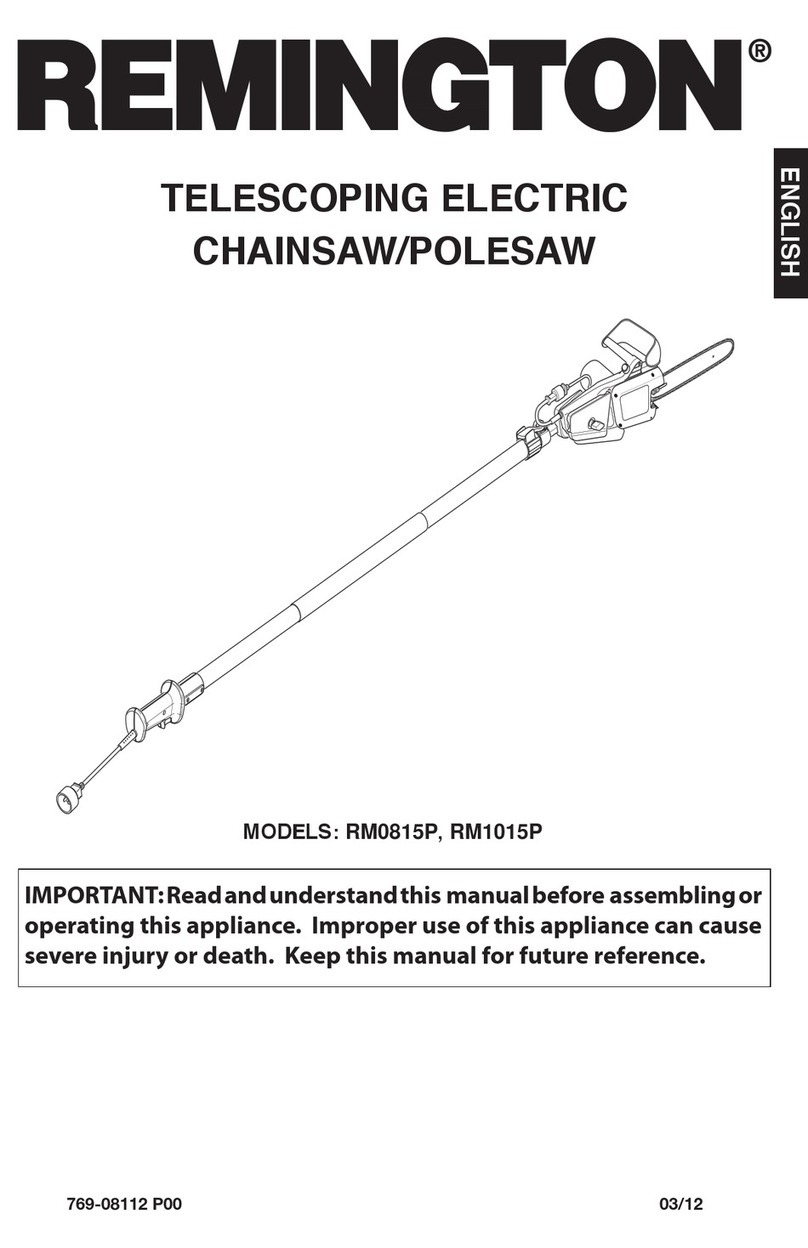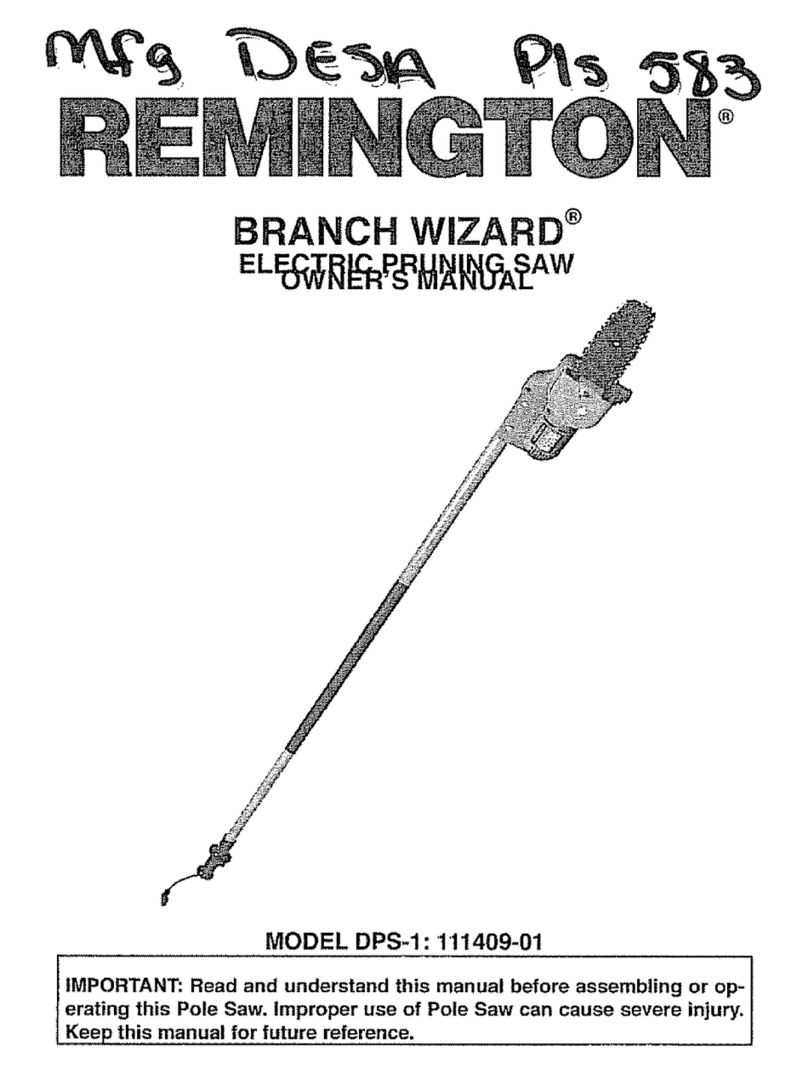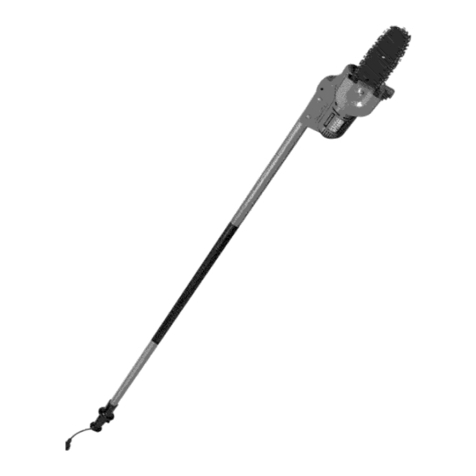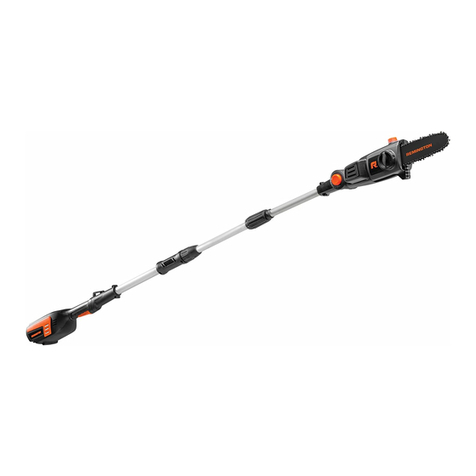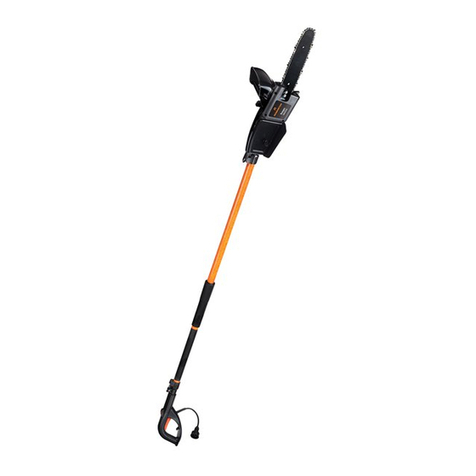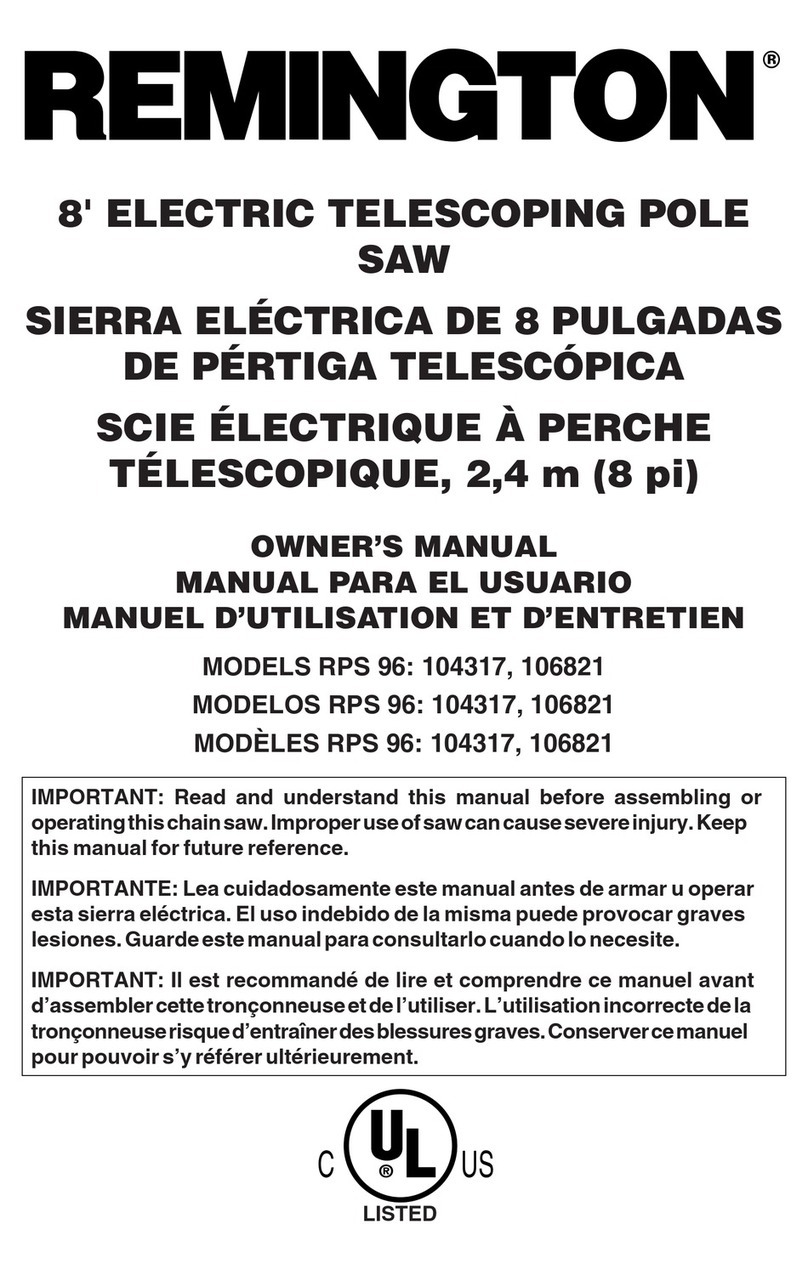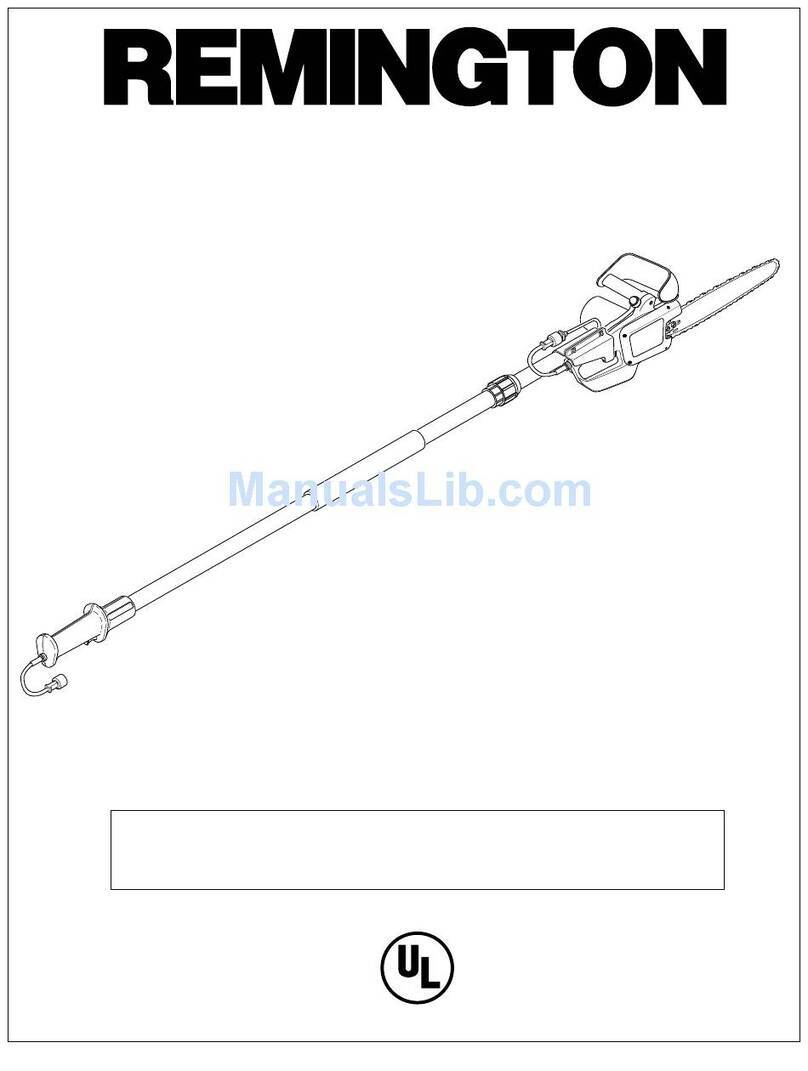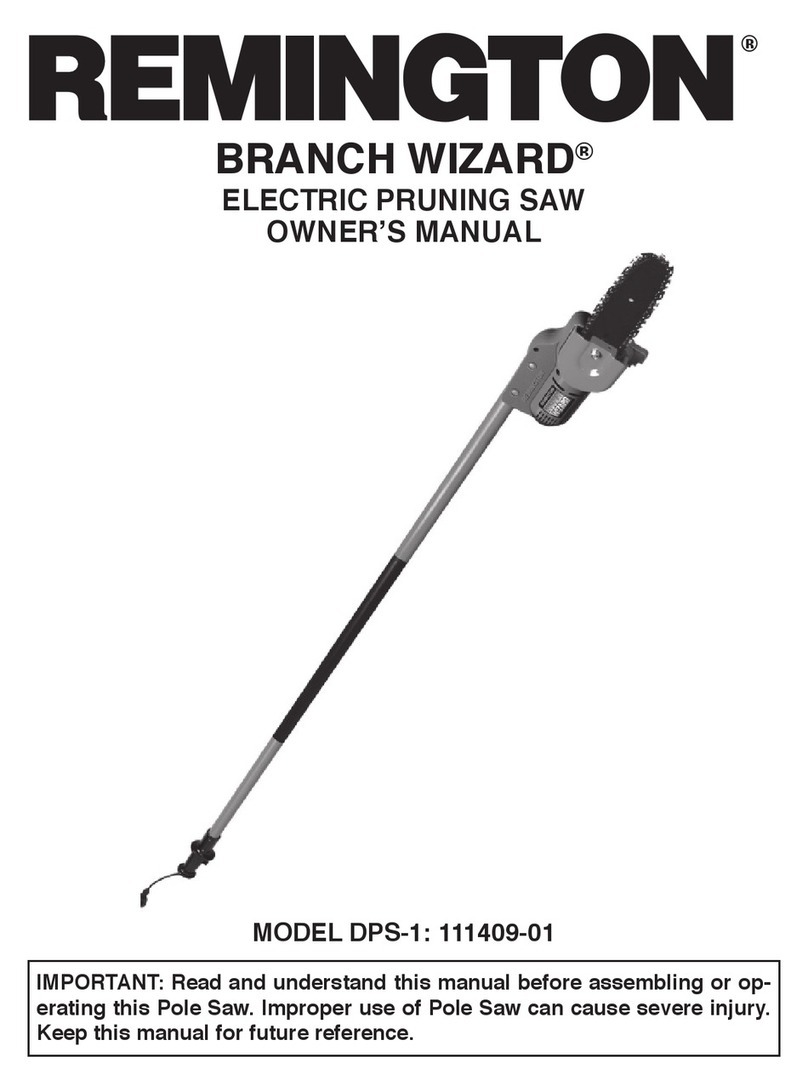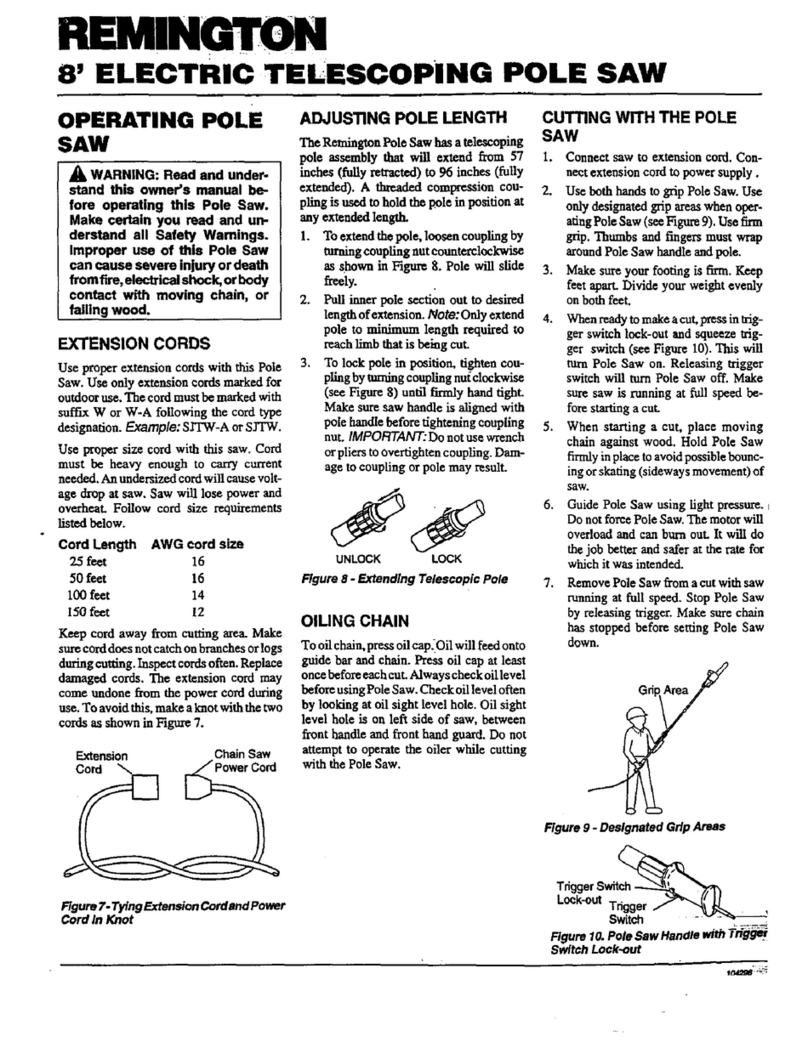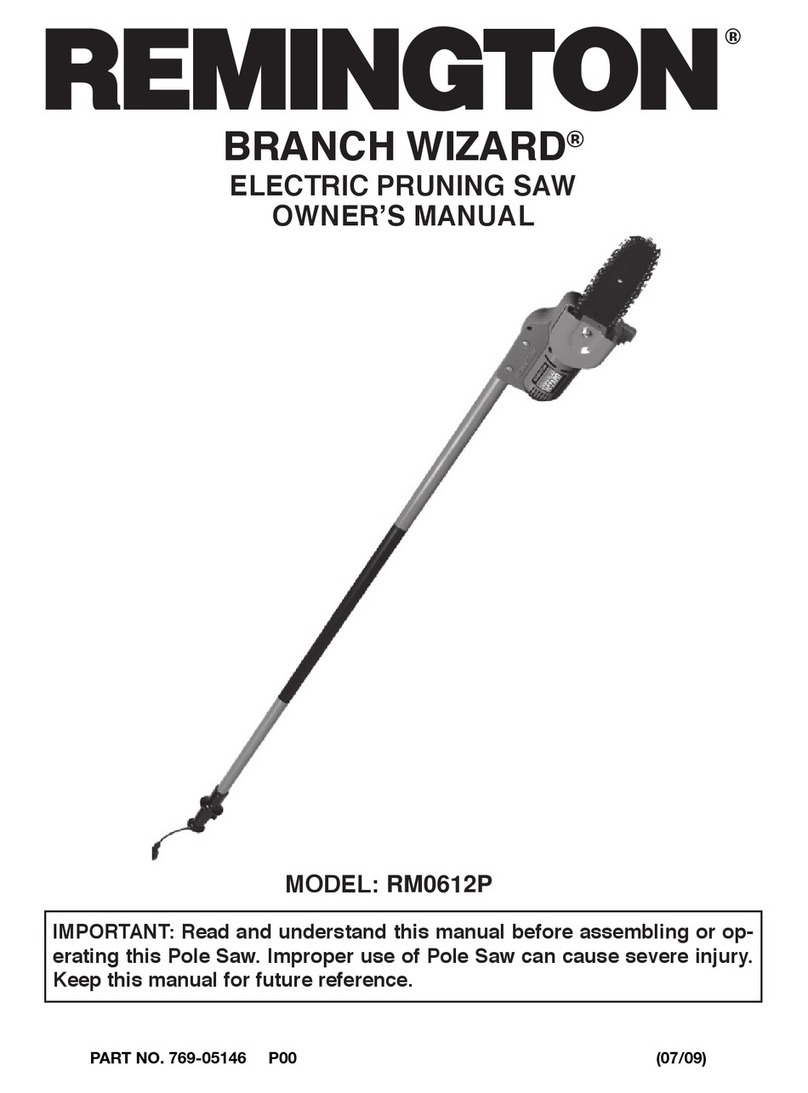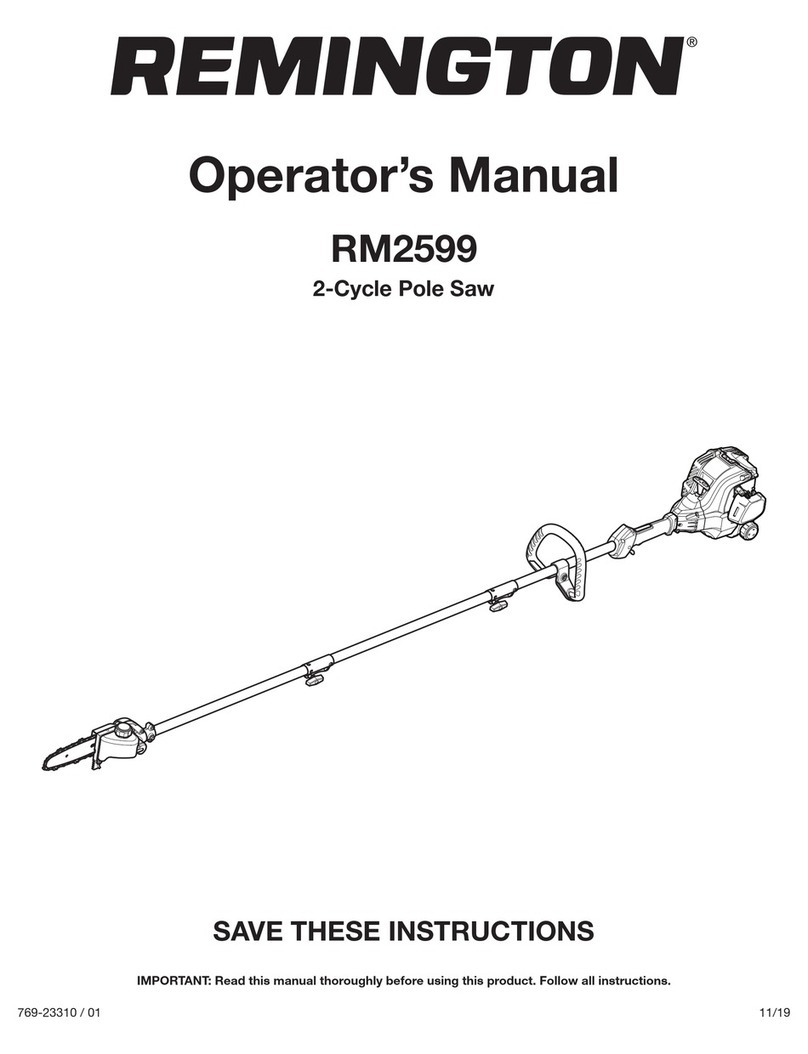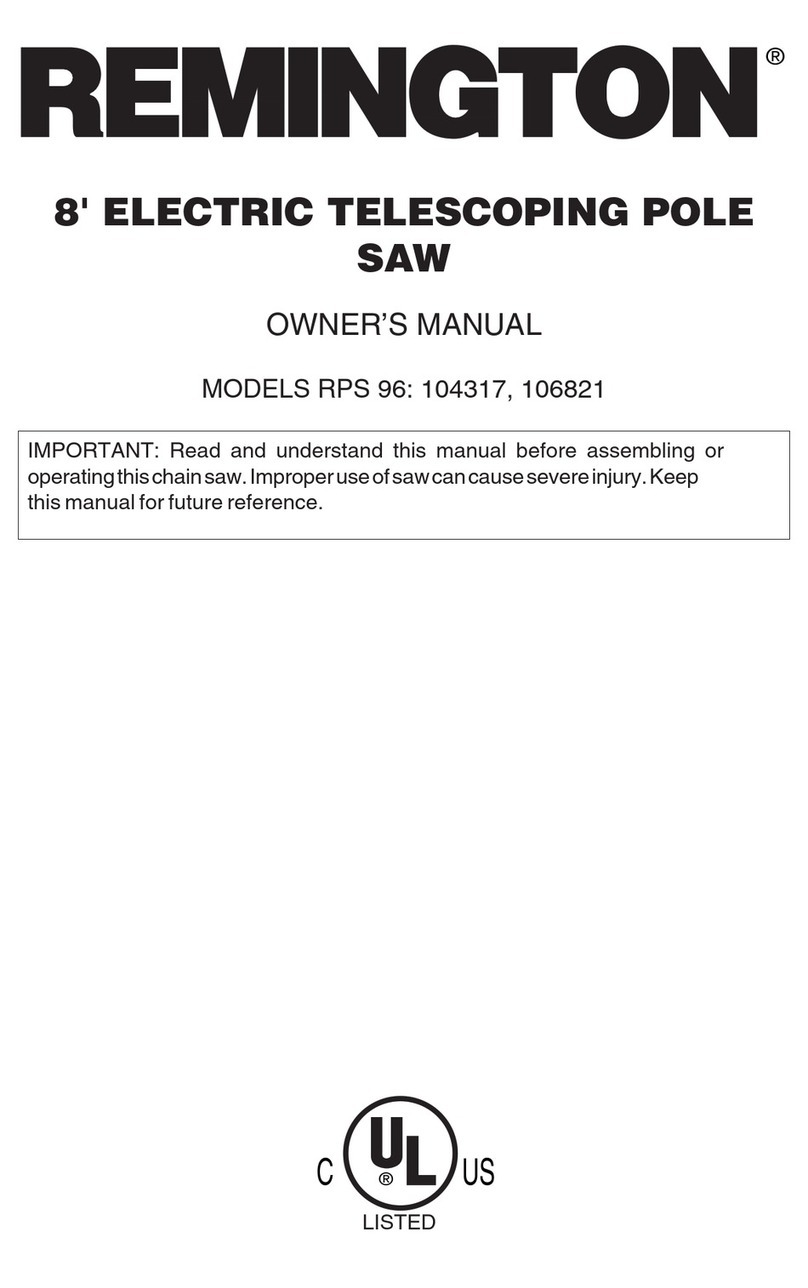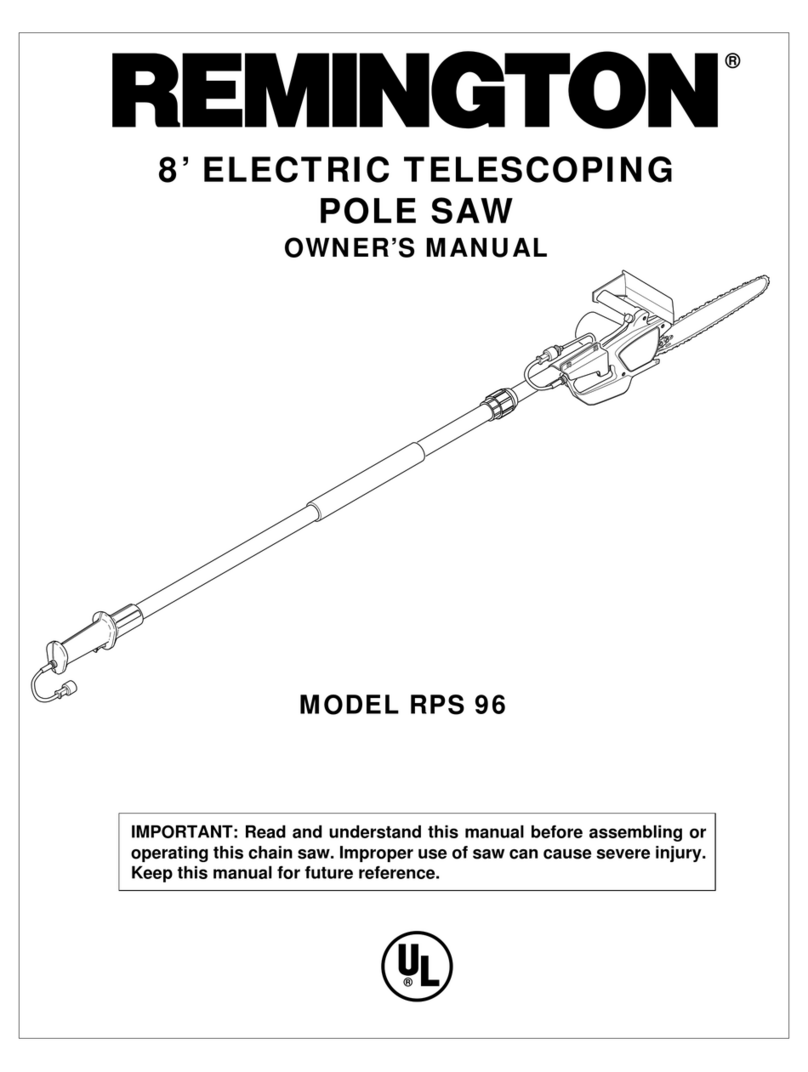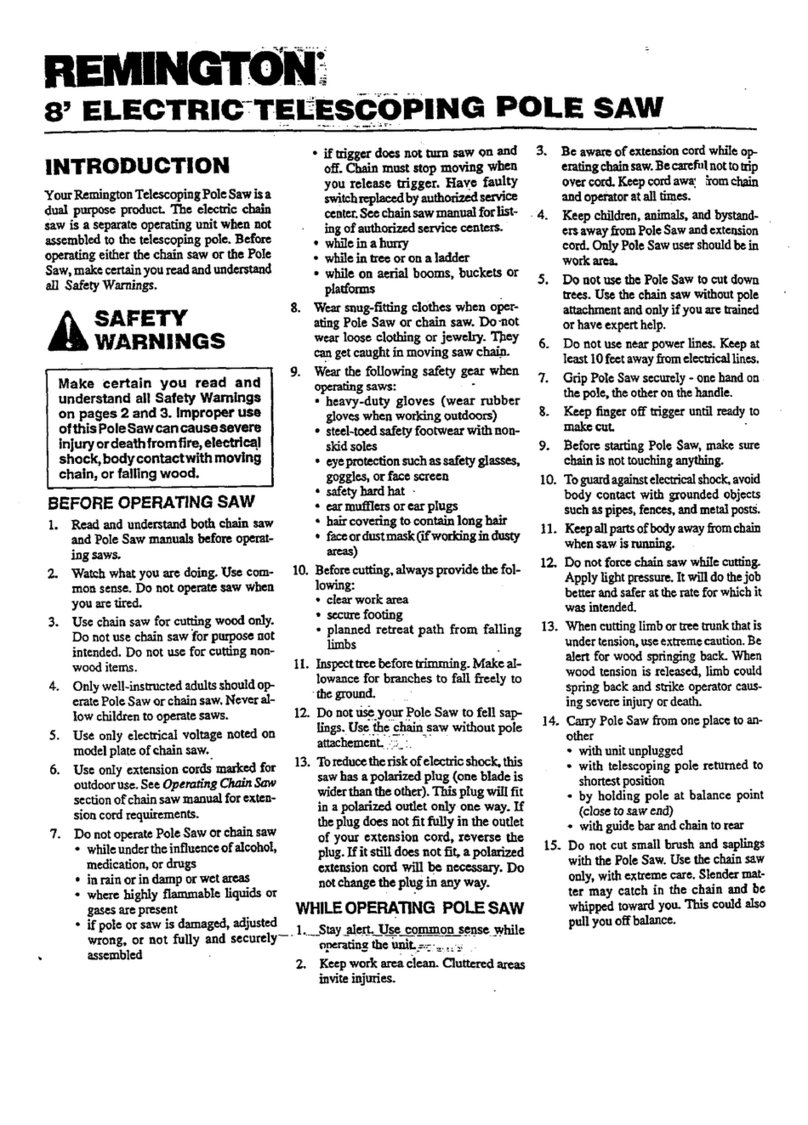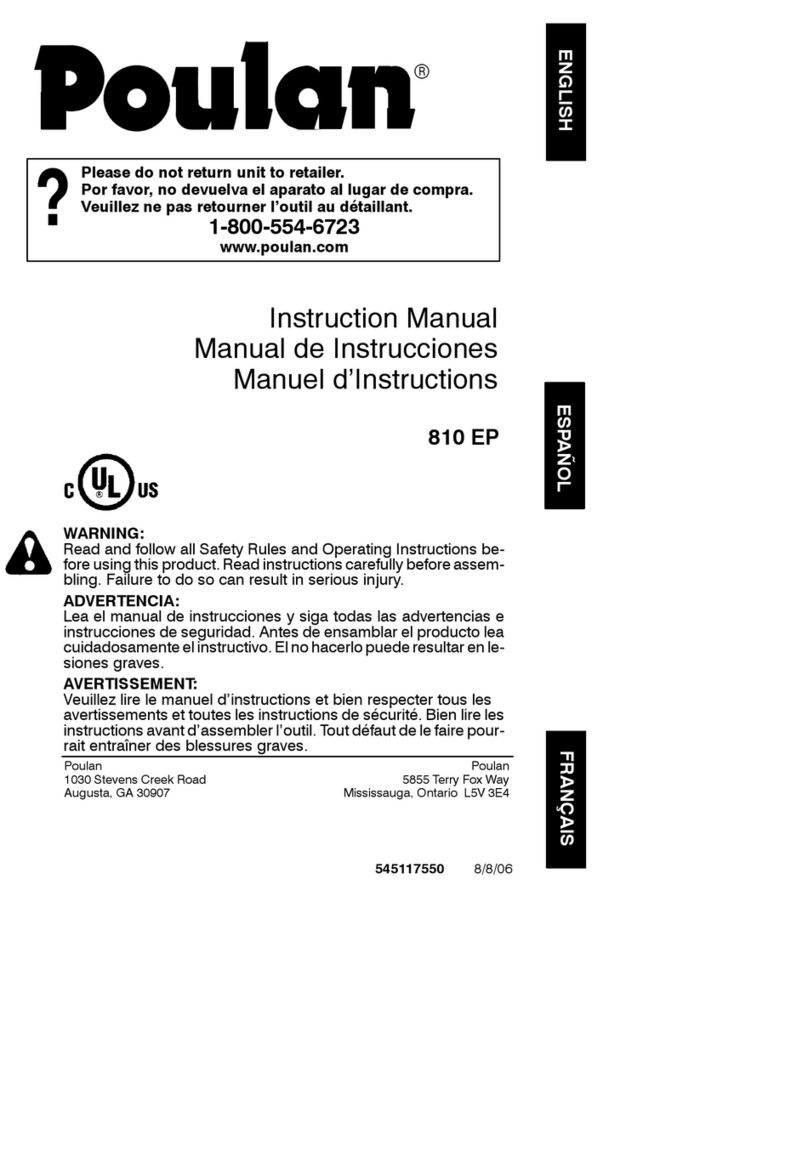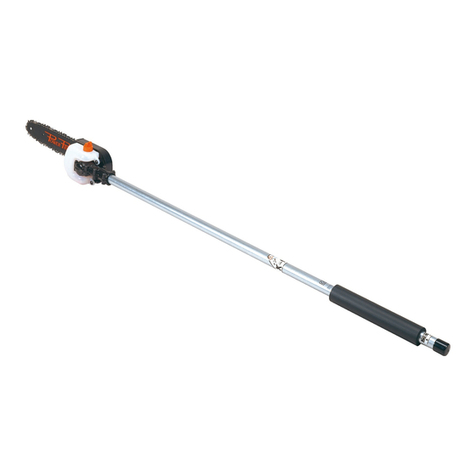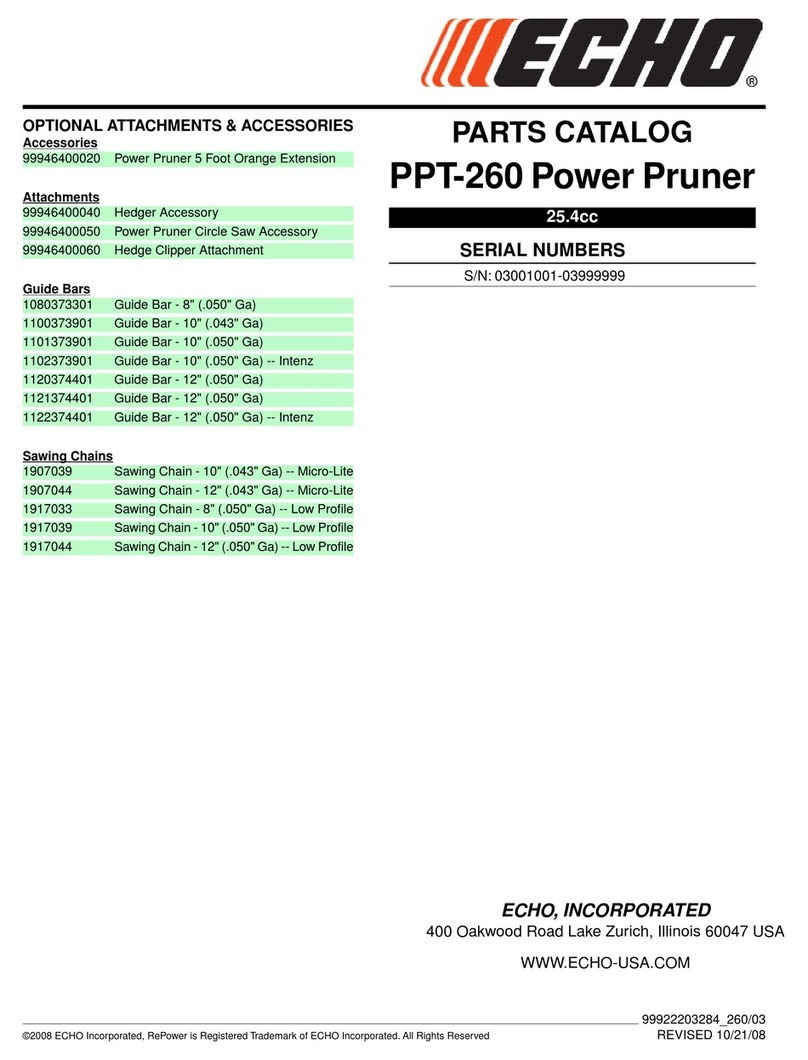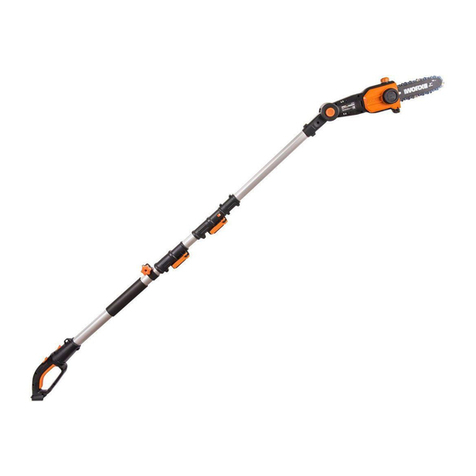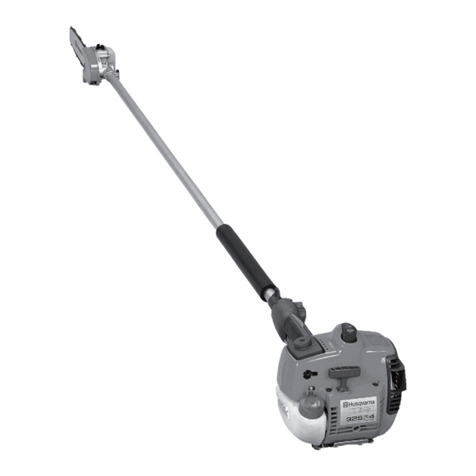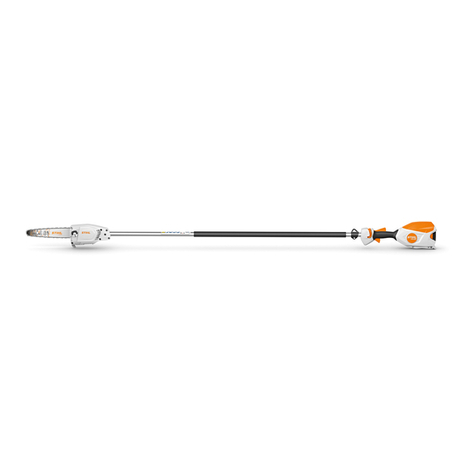
3
• IMPORTANT SAFETY INSTRUCTIONS •
GENERAL POWER TOOL SAFETY WARNINGS
Save all warnings and instructions for future reference.
The term “power tool” in the warnings refers to your mains-operate
(cor e ) power tool or battery-operate (cor less) power tool.
1) Work Area Safety
a) eep work area clean and well lit. Cluttere or ark areas
invite acci ents.
b) Do not operate power tools in explosive atmospheres, such
as in the presence of flammable liquids, gases or dust.
Power tools create sparks which may ignite the ust or fumes.
c) eep children and bystanders away while operating a
power tool. Distractions can cause you to lose control.
2) Electrical Safety
a) Power tool plugs must match the outlet. Never modify the
plug in any way. Do not use any adapter plugs with
earthed (grounded) power tools. Unmo ifie plugs an
matching outlets will re uce risk of electric shock.
b) Avoid body contact with earthed or grounded surfaces
such as pipes, radiators, ranges and refrigerators. There is
an increase risk of electric shock if your bo y is earthe or
groun e .
c) Do not expose power tools to rain or wet conditions. Water
entering a power tool will increase the risk of electric shock.
d) Do not abuse the cord. Never use the cord for carrying,
pulling or unplugging the power tool. eep cord away from
heat, oil, sharp edges or moving parts. Damage or
entangle cor s increase the risk of electric shock.
e) When operating a power tool outdoors, use an extension
cord suitable for outdoor use. Use of a cor suitable for
out oor use re uces the risk of electric shock.
f) If operating a power tool in a damp location is unavoidable,
use a ground fault circuit interrupter (GFCI) protected
supply. Use of a GFCI re uces the risk of electric shock.
3) Personal Safety
a) Stay alert, watch what you are doing and use common
sense when operating a power tool. Do not use a power
tool while you are tired or under the influence of drugs,
alcohol or medication. A moment of inattention while
operating power tools may result in serious personal injury.
b)Use personal protective equipment. Always wear eye
protection. Protective equipment such as ust mask, non-ski
safety shoes, har hat, or hearing protection use for
appropriate con itions will re uce personal injuries.
c) Prevent unintentional starting. Ensure the switch is in the
off-position before connecting to power source and/or
battery pack, picking up or carrying the tool. Carrying
power tools with your finger on the switch or energizing power
tools that have the switch on invites acci ents.
d) Remove any adjusting key or wrench before turning the
power tool on. A wrench or a key left attache to a rotating
part of the power tool may result in personal injury.
e) Do not overreach. eep proper footing and balance at all
times. This enables better control of the power tool in
unexpecte situations.
WARNING:Read all safety warnings and all
instructions. Failure to follow the warnings and instructions
may result in electric shock, fire and/or serious injury.
f) Dress properly. Do not wear loose clothing or jewelry.
eep your hair, clothing and gloves away from moving
parts. Loose clothes, jewelry or long hair can be caught in
moving parts.
g) If devices are provided for the connection of dust
extraction and collection facilities, ensure these are
connected and properly used. Use of ust collection can
re uce ust-relate hazar s.
4) Power Tool Use and Care
a) Do not force the power tool. Use the correct power tool
for your application. The correct power tool will o the job
better an safer at the rate for which it was esigne .
b) Do not use the power tool if the switch does not turn it on
and off. Any power tool that cannot be controlle with the
switch is angerous an must be repaire .
c) Disconnect the plug from the power source and/or the
battery pack from the power tool before making any
adjustments, changing accessories, or storing power
tools. Such preventive safety measures re uce the risk of
starting the power tool acci entally.
d) Store idle power tools out of the reach of children and do
not allow persons unfamiliar with the power tool or these
instructions to operate the power tool. Power tools are
angerous in the han s of untraine users.
e) Maintain power tools. Check for misalignment or binding
of moving parts, breakage of parts and any other
condition that may affect the power tool’s operation. If
damaged, have the power tool repaired before use. Many
acci ents are cause by poorly maintaine power tools.
f) eep cutting tools sharp and clean. Properly maintaine
cutting tools with sharp cutting e ges are less likely to bin
an are easier to control.
g) Use the power tool, accessories and tool bits etc. in
accordance with these instructions, taking into account
the working conditions and the work to be performed. Use
of the power tool for operations ifferent from those inten e
coul result in a hazar ous situation.
5) Service
a) Have your power tool serviced by a qualified repair person
using only identical replacement parts. This will ensure that
the safety of the power tool is maintaine .
Chain saw safety warnings:
•eep all parts of the body away from the saw chain when
the chain saw is operating. Before you start the chain saw,
make sure the saw chain is not contacting anything. A
moment of inattention while operating chain saws may cause
entanglement of your clothing or bo y with the saw chain.
•Always hold the chain saw with your right hand on the rear
handle and your left hand on the front handle. Hol ing the
chain saw with a reverse han configuration increases the
risk of personal injury an shoul never be one.
•Hold the power tool by insulated gripping surfaces only,
because the saw chain may contact hidden wiring or its
own cord. Saw chains contacting a “live” wire may make
expose metal parts of the power tool “live” an coul give the
operator an electric shock.
